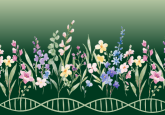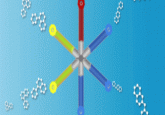Disordered protein structures key in gene expression mechanisms

Researchers find disordered protein segments are involved in gene expression, which could have implications in how cancer and neurodegenerative diseases are treated.
Researchers from the Baylor College of Medicine (TX, USA) and the Czech Academy of Sciences (Prague, Czech Republic) studied the role of disordered protein interactions in gene expression, which has previously been underappreciated. This uncovered a novel mechanism of cell assembly, which is essential to normal cell function but could also appear in HIV infection, cancer and neurodegenerative diseases.
Previous studies on gene expression tend to focus on cellular components that turn genes completely on or off; however, this study finds proteins that control the rate of gene expression do so with more nuance. H. Courtney Hodges, corresponding author of the paper, says, “our work reveals a new perspective – that the proteins that regulate the rate of gene expression also can work collectively to finely tune expression levels in many different settings. We identified the mechanism that brings these proteins together and plays widespread roles in health and disease.”
Previously, protein interactions in leukemia and HIV infections have been studied, specifically those involving protein regions called TFIIS N-terminal domains (TNDs). This study found these domains to be present in many other proteins as well.
“Everywhere we looked, we found these domains, in particular the machinery that regulates transcription elongation, one of the first steps of gene expression in human cells. Transcription elongation is a complex cellular process that involves many different proteins working together,” said Katerina Cermakova, the first author of this study.
 HIV genome eliminated in an untreated patient for the second time
HIV genome eliminated in an untreated patient for the second time
A second incidence of a HIV patient’s body eliminating intact HIV genomes without the aid of treatment has been discovered.
“We discovered that TNDs are the most enriched structural element in all transcription elongation factors. Once you look for them, you find that all the important protein complexes involved in transcription elongation have a TND or bind a protein that has one.”
Proteins are made of highly organized and disordered segments. “One remarkable thing about these unstructured regions is their unusual behavior as molecules,” says co-corresponding author Vaclav Veverka. For example, the unstructured segments of a protein called the TND-interacting motifs (TIMs) are thought to be a docking platform for other protein regions.
“Imagine a TIM as a string that is loose at one end and moves as if being blown around by a hurricane. But when it finds its TND partner, the string curls up and holds on very tightly to the TND to keep it close,” explains Veverka. This mechanism has been shown to play a significant role in the early stages of gene expression.
Disrupting these disordered sections resulted in altering the gene as the “first step of the gene expression started, but was paused and unable to be completed, preventing efficient gene expression,” explains Hodges.
“We first determined that TNDs and TIMs bound together in ‘test tube’ type of experiments, but it was really exciting to see that they bind to each other in living cells, validating the relevance of our observations in living systems,” says Cermakova.
These disordered protein interactions are essential in regulating gene expression. “We found that IWS1 [a transcription elongation factor] uses specific TND-TIM interactions to coordinate the activities of many transcription regulators at the same time, making it appear like a conductor at a symphony that keeps all the factors working in harmony and close by,” says Veverka.
With this new insight into the mechanism of gene expression, TNDs and TIMs could become novel targets for treatments of cancer and viral infections, among others.





